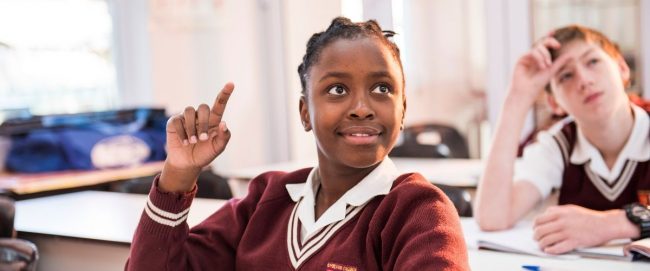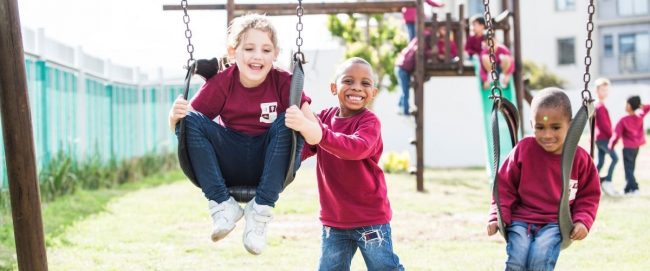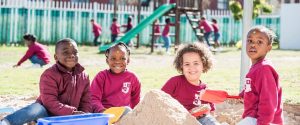Strategies to Create A Productive, Positive Classroom Learning Environment
Positive learning environments are essential for students’ academic, social and emotional success. It is not enough to create positive learning environments. Positive classroom learning environments are made up of many components. Positive classroom learning environments should foster safety and trust, encourage taking risks, foster open and authentic conversations, trust and respect, and foster positive interaction.
Your students should feel happy and engaged from the start of every school year. It’s not too late. We will be talking about positive action strategies and tips that educators can use to create a positive classroom learning environment for students. These strategies will help you create learning environments that encourage academic success as well as social and emotional well being for your students.
What makes a classroom a positive environment?
Positive classroom environments are one where students feel safe sharing their thoughts, taking chances, asking questions, and tackling challenges in learning. This type of classroom environment can be created by educators who set clear expectations and provide opportunities for students to develop social skills, build relationships with them, and offer relevant content. Students feel valued when educators create this kind of environment in the classroom. This allows students to become more involved in the learning process and creates a more productive learning environment.
Our Vision
To provide a platform for independent schools to learn and become pillars in their community. We aim to instill strong morals, values and education ….
Step 1 – Make learning relevant
Students will be more engaged in learning if they feel the subject or topic is important to their happiness and success. When teaching history, science and social studies, it is important that lectures are adapted to the students’ interests. It’s a smart idea to discover the learning styles and talents of students if you can. If you have the resources, students will be more engaged and attentive.
Step 2 – Develop a Code of Conduct
If students aren’t in agreement on the positive and negative behaviors, it’s difficult to create a positive learning environment at school or in the classroom. Students must first consider how they feel about being treated in order to establish a code. Then, students should be able to brainstorm acceptable behaviors they consider appropriate, respectful, kind, fair, and appropriate. Teachers and students can then agree on how to treat other people. This will set the tone in the classroom.
Step 3 – Use a Positive Actions Curriculum
While it would be great for students to all have the same understanding of positive behavior, that is not possible. Children come from many cultural, socioeconomic, and familial backgrounds. These influences, along with many others, influence students’ perceptions about what is acceptable and unacceptable. Positive behavior should be taught in a consistent and systematic way at school and in the classroom. The best way to instill positive behavior is with a Positive Action curriculum. Positive action is something students should be taught.
-
Positive actions can result in positive feelings and a positive self image.
-
A healthier body can be achieved by taking positive actions such as exercise, nutrition, and sleep.
-
Positive actions such as problem-solving or decision-making can help our brains become smarter and more efficient.
-
Positive actions such as kindness, respect and living by the Golden Rule allow us to be kind and helpful to others.
-
Positive actions such as managing your time well and managing your emotions can help you manage your affairs better.
-
Positivity is the ability to admit our mistakes and take responsibility for them. This allows us and others to be more open with each other.
-
Setting goals and taking positive actions can help you grow.
Positive things make children feel better about themselves.
Our Mission
By instilling excellence, perseverance and hard work, we can leave a lasting legacy.

Engaged Learning Environment – How Important Is It?
Research has shown that interactive learning environments increase students’ attention, focus, motivation. The School of Rose Valley employs a student-centered teaching approach. Active learning encourages engagement and creates a learning environment that is fun. Instead of sitting still and listening, students are encouraged to engage in class. In order to meet individual learners’ needs, class time is used to ask, apply, and evaluate.
What benefits can an engaged learning environment bring?
Engaged learning environment
-
Students have more interaction with their teachers and peers
-
Students get frequent feedback
-
Tasks take more effort, time and money.
-
Students can apply their knowledge to different situations
-
You can have many experiences with it
What makes an environment for learning engaging?
Engaged learning is based on students’ motivation and active learning. Motivation is dependent on students’ desire to learn and expectations. Students who believe they can succeed and are excited about learning will be motivated. Students who are eager to learn and gain insight will benefit from positive learning experiences and influence.
Active learning does not require physical movement. Active learning is about student involvement in the learning process. Students can become active participants in their learning. Students are offered the opportunity to connect previous learning with new discoveries. This helps them to make deeper connections and retain the information. Many modern teaching methods are heavily based on PowerPoint presentations and lectures. This makes students passive recipients of information rather than active learners.
When students are connected, classrooms can be transformed into learning communities. Students can feel connected to their teachers, and engage in collaborative, active learning. Students learn not just through logic, but also by exploring the learning process in a way that appeals and feels to them. This allows students to learn at their own pace and allows them to be more personalized.
Our Philosophy
We believe that sharing knowledge and learning is possible through exploration, investigation and discussion.

Ways To Foster A Positive Classroom Environment
Educational strategies today emphasize that classrooms can be more than just a place to learn. Teachers know that students are more motivated and safe when they have a positive learning environment. The importance of fostering a positive classroom atmosphere and offer suggestions on how to do it is so essential.
Always be there for them
Supporting your students in times of need is a simple but effective way to create a positive learning environment. Sometimes students need support for academic problems or to discuss personal situations at home. Students often find it helpful to have someone they trust listen to their concerns and offer advice when necessary. Many students feel reassured knowing that someone listens and comforts them.
Students have a right to a voice.
Students who feel that their opinions are valued in class discussions are more likely to be encouraged to speak before their peers. Students should be encouraged to voice their opinions, take chances and choose how they learn best. This promotes student empowerment. This encourages self-confidence, which in turn supports positive learning environments.
Students-centered learning encourages learners to participate in class decisions and allows them to learn in the way that is most comfortable for them. They will feel more involved in the decisions that affect their learning if they have more options. They may feel more connected if they feel their input is important and will put in more effort in classwork.
Establish a routine
Many children are able to thrive when they have a consistent daily routine. Students can feel more at ease if they know what to expect when entering your classroom. A classroom routine can include a bell ringer at the beginning of each day, reviewing the day’s objectives and ending each class with an exit ticket.
It may be worth considering doing the same activities every week. You could, for example, go to the library every Tuesday to use technology and then have a reading time in class on Friday. Students will be able to establish a routine so they know what to expect when they arrive in your classroom.
Establish rules and expectations
It is important to establish guidelines, such as classroom rules or expectations, so students are aware of what is acceptable behavior. You might consider asking your students to discuss the rules that they think should be added to your classroom rules. This will give them the opportunity to express their opinions on important aspects of your class.
Establishing expectations can help you manage your classroom better and maintain its daily structure. Students will behave better when they know you will follow through on your expectations and rules.
Provide positive reinforcement
Positive reinforcement is a great way to foster a positive classroom culture. Extrinsic motivators are one way to provide positive reinforcement. Extrinsic motivations are external stimuli that encourage students to be positive, such as candy for passing a test or five minutes of extra time at the end. A good extrinsic motivator is to praise students publicly. It is possible to compliment students’ academic performance or behavior in front of others. You may also contact parents to let them know about the positive actions their child has been showing.





